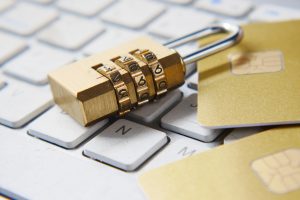In today’s digital age, ensuring the security of your computer and network is of paramount importance. Cyber threats and scams are becoming increasingly sophisticated, but by following some simple cyber security rules, you can bolster your defenses.
1. Stay Calm and Assess
The first and foremost rule of cyber security is to remain calm. Cybercriminals often use fear tactics to manipulate their victims. When confronted with an alarming email or message, take a moment to assess the situation. Verify the threat’s authenticity before taking any action, safeguarding your computer and network security.
2. Steer Clear of Unknown Attachments for Enhanced Cyber Security
Email attachments are a common vector for malware, posing risks to both computer and network security. Never open attachments from unknown sources, and exercise caution even if you recognize the sender. Cybercriminals can spoof email addresses, making it crucial to err on the side of caution. If in doubt, utilize a service like VirusTotal to scan suspicious attachments.
3. Think Twice Before Clicking
Unsolicited links can lead to phishing sites or malware downloads, endangering both your computer and network security. Cybercriminals excel at crafting deceptive emails and convincing links. Trust your instincts; if something seems amiss, refrain from clicking. Instead, access websites directly through bookmarks or by typing the URL to enhance both computer and network security.
4. Quality Overpaid Security Software
You don’t have to break the bank for security software. Most consumer-grade security software, often accompanied by exaggerated claims, offers minimal additional protection. In many cases, your personal computer’s built-in security features are more than sufficient. Save your money and rely on trusted, built-in defenses to fortify your computer network security.
5. Protect Your PC: Don’t Compromise Cyber Security
One common way malware infiltrates computers is through the installation of sketchy software or clicking on sponsored links, jeopardizing both computer and network security. The best defense is to refrain from installing random applications. For Windows 11 Pro or Enterprise users, the Windows Sandbox feature provides a secure virtual environment to test potentially risky software, reinforcing network security in computer network environments.
6. Embrace the Power of Password Managers
Password management is a cornerstone of cyber security and data network security. Remembering strong, unique passwords for every account is impractical. Password managers, such as NordPass, create and store complex passwords for you. They enhance your online security and make navigating the web safer and more convenient, contributing to robust computer security and data network security.
By implementing these simple yet effective cyber security rules, you can significantly enhance your computer security. Staying vigilant and informed is the key to safeguarding your digital life. With these measures in place, you can protect your digital assets and data from malicious threats, ensuring both your computer and network security. Stay safe online!
